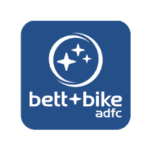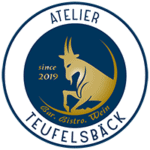Accessibility statement of the Hotel Brunner in Amberg
We are accessible
The statement
Introduction
We strongly believe that the Internet should be available and accessible to everyone and are committed to providing a website that is accessible to the widest possible audience, regardless of circumstance or ability.
Guidelines
To meet this, we strive to comply as strictly as possible with the World Wide Web Consortium’s(W3C) Web Content Accessibility Guidelines 2.1(WCAG 2.1) at the AA level.
These guidelines explain how to make web content accessible to people with a variety of disabilities. Adhering to these guidelines helps us ensure that the site is accessible to all people: blind people, people with motor impairments, visual impairments, cognitive disabilities, and more.
Technologies
This website uses various technologies to make it as accessible as possible at all times. We use an accessible interface that allows people with certain disabilities to customize the UI (user interface) of the website and design it according to their personal needs.
Additionally, the website uses an AI-based application that runs in the background and constantly optimizes the level of accessibility. This application corrects the HTML of the website, adapts the functionality and behavior for screen readers used by blind users and for keyboard functions used by people with motor disabilities.
If you have found a malfunction or have suggestions for improvement, we would be pleased to hear from you. You can contact the operators of the website by using the following e-mail:
.Screen reader and keyboard navigation
Our website implements Accessible Rich Internet Applications (ARIA) attributes in addition to various behavioral changes to ensure that blind users visiting with screen readers can read, understand, and enjoy website features. As soon as a user with a screen reader enters your site, they will immediately receive a prompt to enter the screen reader profile so they can effectively browse and serve your site. In this way, our website covers some of the most important screen reader requirements, alongside console screenshots of code samples:
Screen Reader Optimization
We run a background process that learns the components of the site from the top down to ensure continuous compliance even as the site is updated. In this process, we provide screen readers with meaningful data using the ARIA attribute set. For example, we provide accurate form labels:
- Descriptions for actionable icons (social media icons, search icons, shopping cart icons, etc.)
- Validation instructions for form inputs
- Element roles like buttons, menus, modal dialogs (popups) and others
In addition, the background process scans all images on the site and provides an accurate and meaningful description based on image object recognition as an ALT tag (alternative text) for images that are not described. It also extracts text embedded in the image using optical character recognition (OCR) technology.
To turn on screen reader customizations at any time, users just need to press the Alt+1 key combination. Screen reader users also receive automatic prompts to turn on screen reader mode as soon as they enter the site.
These customizations are compatible with all major screen readers, including JAWS and NVDA.
Optimization of keyboard navigation
The background process also customizes the HTML of the website and adds various behaviors using JavaScript code to make the website usable from the keyboard. These options include:
- Navigating through the website with the Tab and Shift+Tab keys
- Operating the dropdowns with the arrow keys
- Close dropdowns with ESC
- Triggering buttons and links with the Enter key
- Navigation with the arrow keys between radio and checkbox elements
- Fill in radio and checkbox elements with the space bar or the Enter key
- Keyboard users will find quick navigation and content skip menus available at any time with Alt+1 or as the first elements of the site when navigating with the keyboard
- The background process also handles triggered popups by moving the keyboard focus towards them as soon as they appear, and not allowing the focus to drift outside of them.
- Users can also use keyboard shortcuts such as “M” (menus), “H” (headings), “F” (forms), “B” (buttons), and “G” (graphics) to jump to specific items.
Disability profiles supported in our website
Epilepsy safe mode
This profile allows people with epilepsy to use the site safely by eliminating the risk of seizures caused by flashing or flashing animations and risky color combinations.
Visually Impaired Mode
This mode customizes the website for the convenience of users with visual impairments such as failing eyesight, tunnel vision, cataracts, glaucoma, and others.
Cognitive impairment mode
This mode provides several assistive options to help users with cognitive impairments such as dyslexia, autism, CVA, and others focus more easily on the essential elements of the site.
ADHD-friendly mode
This mode helps users with ADHD and neurodevelopmental disorders to more easily read, scroll, and focus on the essential elements of the website while significantly reducing distractions.
Blind friendly mode
This mode configures the site to be compatible with screen readers such as JAWS, NVDA, VoiceOver, and TalkBack. A screen reader is software for blind users installed on a computer and smartphone that websites must be compatible with.
Keyboard navigation profile (motor impaired)
This profile enables motor-impaired persons to operate the website with the keyboard Tab, Shift+Tab and the Enter keys. Users can also use keyboard shortcuts such as “M” (menus), “H” (headings), “F” (forms), “B” (buttons), and “G” (graphics) to jump to specific items.
Additional UI, design and readability adjustments
Font adjustments
Users can increase and decrease font size, change font family (type), adjust spacing, alignment, line height, and more.
Color Matches
Users can select different color contrast profiles, such as light, dark, inverted, and monochrome. Users can also swap color schemes of titles, texts and backgrounds with over 7 different color options.
Animations
Epileptic users can stop all running animations with one click. Animations controlled from the interface include videos, GIFs, and flashing CSS transitions.
Content highlighting
Users can choose to highlight important elements such as links and titles. You can also choose to highlight only focused items or items held with the mouse pointer.
Audio mute
Users with hearing aids may experience headaches or other problems due to automatic audio playback. This option allows users to mute the entire website instantly.
Cognitive disorders
We use a search engine linked to Wikipedia and Wiktionary that allows people with cognitive disorders to decipher the meaning of phrases, initials, slang, etc.
Additional functions
We offer users the ability to change the color and size of the cursor, use a print mode, enable a virtual keyboard, and many other features.
Compatibility with browsers and supporting technologies
Our goal is to support the widest possible range of browsers and assistive technologies so that our users can choose the tools that best suit their needs with as few limitations as possible. As a result, we have worked very hard to support all the major systems that make up over 95% of the user market share, including Google Chrome, Mozilla Firefox, Apple Safari, Opera and Microsoft Edge, JAWS and NVDA (screen readers), for both Windows and MAC users.
Notes, comments and feedback
Despite our best efforts to allow everyone to customize the site to their needs, there may still be pages or sections that are not fully accessible, are in the process of becoming accessible, or lack an appropriate technical solution to make them accessible. However, we are constantly improving our accessibility, adding, updating and improving their options and features, and developing and adopting new technologies. All this serves to achieve an optimal level of accessibility that follows technological advances. For any assistance, please contact us via contact form.
Our partners
















